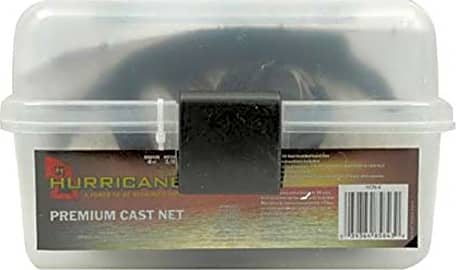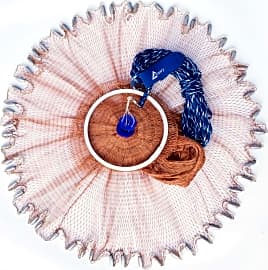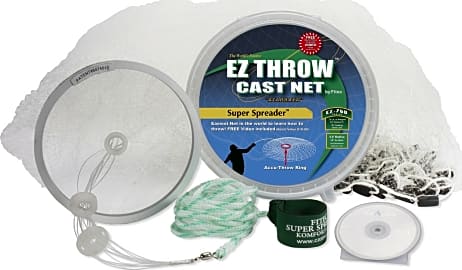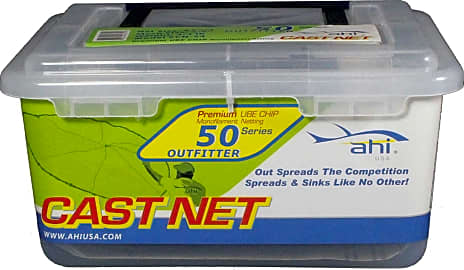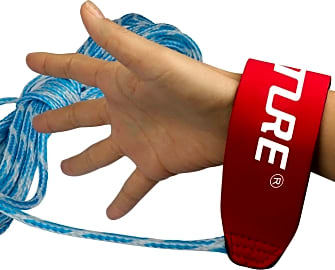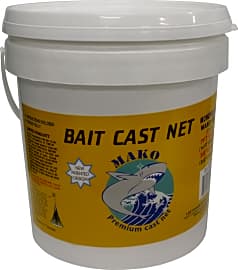The 10 Best Cast Nets

This wiki has been updated 37 times since it was first published in September of 2015. Cast nets have been around for ages, and the fact that commercial and sport fishers continue to use them is a testament to their effectiveness. When thrown into the water, they spread out into a flat shape and sink to the bottom, trapping everything in their path for quick retrieval. They’re available in a variety of sizes for different aquatic environments and levels of user experience. When users buy our independently chosen editorial recommendations, we may earn commissions to help fund the Wiki.
Editor's Notes
June 11, 2021:
Nothing new to report in the world of cast nets. The Bait Buster Pro is still our top suggestion due to its high-strength line and the range of diameters it comes in. The Betts Tyzac is similarly durable thanks, in part, to epoxy-sealed knots. The South Bend CNMO4 is an affordable lightweight choice, and though it's not mean for the largest species, it's relatively easy to throw. On the other side of the coin, the Drasry Throw is engineered for use in deeper water and offers over 40 feet of range.
January 15, 2020:
We discovered issues with several of the items that led to their removal. Reports indicated that the JShanmei Handmade lacks reliable durability and fails to consistently open fully when tossed, while some of the other models easily rip and suffer from low-quality sinkers.
The Goture American features a handy wrist strap to prevent the user from losing control of the hand line, but we learned that several people were unsatisfied with its sinking speed, so we downgraded it a bit.
The Betts Tyzac offers size, strength, ease of use, and impressive craftsmanship. Its vulnerable points are glued with epoxy to prevent basic underwater structure from damaging it, and it comes in a sturdy utility box. Users appreciate that the Drasry Throw comes with extra line in case you need to make a repair on the spot.
Special Honors
Barracuda Tackle For shallow-water fishermen, Barracuda offers a super-lightweight net that will quickly reach bottom in four feet of water. If you’re working in deeper areas, its heavy-duty Greenwater series features the heavy lead and thick line to get the job done. They’re all backed by a lifetime warranty, too. barracudatackle.com
How To Choose A Cast Net
Using a cast net is one of the oldest and most effective ways to catch fish.
As the name clearly suggests, a cast net is a fishing tool that is thrown -- or cast -- into the water by hand. Using a cast net is one of the oldest and most effective ways to catch fish. While the use of these time honored tools may seem easy in the hands of an experienced fisherman, proper net fishing can take years to master. That's why it's of extra importance that you use a great cast net when learning this method. The better the net you use, the faster your skills and technique will improve.
Before you choose which cast net to buy, first consider how and where you will use your net. If you are fishing off of a dock or pier, for example, you need a cast net with a long tether attached to it. If you are going after fish in waters deeper than a foot or two, you need a cast net that will sink quickly and won't let swift swimmers escape as it descends through the water. If you're going after larger fish, you need a larger net that can withstand the weight and the pull of strong swimmers.
One of the most common reasons people use a cast net is to catch smaller fish that will be used as bait in the hunt for larger game fish. If you're after bait fish, you need a cast net with an exceptionally tightly woven pattern so even the smallest minnows, goldfish, anchovies, or other variety of common baitfish can't wriggle out of your net. That often means a smaller overall net, but that's not a problem, as you will usually be on the hunt for bait fish in shallow waters anyway.
Cast net experts agree that these nets work best in waters not deeper than the net's radius -- note that cast nets are always measure by radius, not by full diameter, so a net that is said to be six feet across is actually going to be twelve feet in total. The logic behind this water depth to net ratio is that this sizing creates a capture area that spans the distance from the seafloor to the top of the water.
Interestingly net fishing is arguably the only good way to catch some fish, such as many varieties of mullet, as not all fish with go after baited hooks, and as some fish are quite particular about which lures or bait they will go after. Only net fishing can reliably catch all sorts of different sea creatures ranging from carp to crabs to shrimp. With practice, one fishing tool can catch all sorts of different fish. If you want a versatile cast net, consider one that is of average size and that has long throw line. Cast nets with a radius of around eight feet tend to be the most common size of cast nets, and are a good choice for use while you wade in the water or as you fish off of a boat or platform.
How To Use A Cast Net
The first step to properly using a cast net is securing the net's throw line to your arm. Many are the cast nets that have been lost by being inadvertently tossed out into the water without the tether secured to an absent minded fisherman's wrist.
Now curl the section held taut into a loop and take hold of the midpoint with the same hand that is holding the top of the net.
A good throw of a cast net is one on which the net opens fully. This starts with the net being properly prepared when held in your hands before the toss. First make sure the net is free of snags and tangles, then take hold of the net's top with one hand and gather it near its midpoint in the other hand. The net should be pulled taut between your two hands.
Now curl the section held taut into a loop and take hold of the midpoint with the same hand that is holding the top of the net. With your other hand, take hold of a section of the bottom, open edge of the net -- many people will hold onto one of the weights at the bottom of the net -- with your non dominant hand. Throw the net with your dominant hand, letting go of the bottom half of the net as soon as you have released with your other hand.
If properly thrown, the cast net will open to its full diameter just before it hits the water and then sinks, capturing any fish below it. It's a good idea to practice using your cast net away from water, as it will become more difficult to throw once it is saturated. Grassy fields are a great place to practice.
A Brief History Of Net Fishing
Fishing with a net is one of the oldest human endeavors that remains common to this very day. The earliest known example of a fishing net is known as the Antrea Net. It dates from approximately 8300 BCE, making it well over ten thousand years old. The Antrea Net was made from woven willow and used bark floats and stone weights not unlike the weights attached to a modern cast net.
The Antrea Net was made from woven willow and used bark floats and stone weights not unlike the weights attached to a modern cast net.
Surely many fishing nets predated this ancient find -- which came from a region that today is part of northwestern Russia -- though none has yet been discovered.
Net fishing was common among many Native American tribes who often used nets woven from grasses or pine boughs and used them for seine style fishing. The Maori also used seine fishing nets, some of which would be dragged between canoes and kept afloat with evenly spaced floats.
Well before European contact, native Hawaiians had become adept fishermen, often using the net as their chosen method of catching fish. They used multiple different kinds of nets including gill nets, encircling nets, and seine nets, as well.
While spear fishing may catch more vividly in the imagination and while hook and line fishing may be the method of recreational fishing most popular today, net fishing has long been the chosen method of many different peoples all over the world. Net fishing allows a single person or a small group working together to catch a large volume of fish quickly and, in many cases, with relatively little effort.




